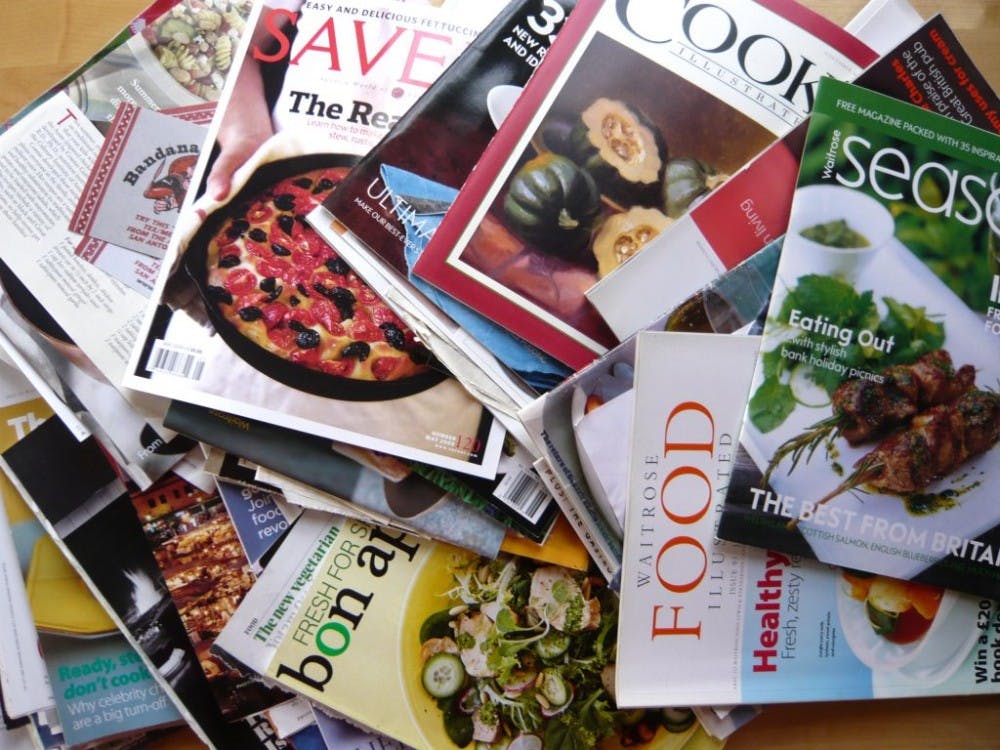Morgan: Audrey, I had a Ratatouille moment the other day.
Audrey: Nice! I’ve never seen Ratatouille, so you’re going to have to elaborate.
M: Okay. There’s a scene in the movie where Ego, this hostile food critic, takes a bite of ratatouille and is instantly transported back to a childhood memory. Yesterday, I had a similar experience when I ordered the chicken curry at Bamboo Café.
It reminded me of my grandmother’s curry, though it wasn’t nearly as good. When I was a kid, I’d spend weekends at my grandmother’s house. She’d often have a huge pot of chicken curry cooking on the stove when I arrived. The sauce was silky, savory and a little sweet.
She would throw in carrots, potatoes, celery and boiled eggs. It was a simple but hearty meal. We’d eat bowls of curry and rice and talk about my week. Those weekends were some of the best parts of my childhood.
A: Yum, sounds delicious. I don’t have anything quite that meaningful, but the smell of chicken and mushrooms cooking in marsala wine takes me back to my childhood kitchen faster than you can say “wine makes everything better.”
M: I need to look up a recipe for that marsala chicken! I think it’s so interesting how food can be so evocative.
A: It is, not to be obvious, a big part of life. Then again, there are relatively few magazines dedicated to breathing and “The Seven Best Types of Air to Serve Your Friends.” Okay, yes, I confess to being facetious, but the fact remains that “we need it to survive” isn’t sufficient explanation for the recent proliferation of food magazines.
Let’s take stock, shall we: Bon Appétit has been around in some form or another since 1956, Food & Wine since 1978, Saveur since 1994. Then there are the lighter fare features: EatingWell, Cooking Light and Clean Eating. (All very well and good, but this is a short column: Skip salad and get to the real food first.)
M: There are so many ways to engage with food writing. There are hard-copy magazines like the ones you just mentioned and there are also food blogs and websites.
A: Definitely, but the hard-copy mags have a special place in my heart. Think about getting your hands on the beautifully alluring, color-filled pages of Lucky Peach, Kinfolk, Gather Journal, Spoonful: A Guide to Home Gatherings or Milk Street. There’s something so satisfying about opening one of these under the Plexiglas of your cookbook stand.
Take Gather: It’s darker than most of the magazines, with more of an early-’90s Bon Appétit vibe but significantly more daring. One of the shots in their winter issue has a pointed-toe pump stepping on an entrée. The backdrops are near-black walls and white marble countertops, so the roasted red of the peppers pops against the alienness of a kitchen too “on-trend” for most of us. It’s the museum of magazines.
Spoonful, on the other hand is the most cheerful (and also the most expensive). It’s $25 an issue at the newsstand, so I don’t do enough entertaining to justify buying this “Guide to Home Gatherings,” but the next-level food porn makes it difficult to resist. From instructions for throwing fundraising dinner parties to something called “The Blessed Thistle Cocktail,” an issue of Spoonful would make even the most inept host look suave and, dare I say it, adult.
My go-to food mag is now Milk Street, Chris Kimball’s most recent brainchild. Although it’s a lot smaller than most of the newer crowd, it’s just as meaty, and it’s only around $7, so fair enough.
M: I love when I can get my hands on print magazines like the ones you just talked about. But as you know, they can be a little pricey, so I consume a lot of food writing via the internet. I have a few that I read regularly.
NPR’s food blog “The Salt,” delves into the history and science behind the food we eat today. I just read a weirdly fascinating piece where three NPR correspondents tested out a Reddit claim that oranges taste better in the shower. That’s some real investigative journalism there.
Then there’s the New York Times Food Section, which is chock full of recipes, contemplative articles and food related news. This section is to die for. The photos are so crisp and there are often handy tips and tricks for making things like the perfect pie crust. Just simple, solid advice and well-written pieces.
Beyond just salivating over pretty pictures and descriptions, I like reading about food because it prompts me to appreciate what I eat. It’s hard to remember to savor ingredients and flavors when you’re wolfing down meals between classes.
Yet, through writing and reading about it, we’re able to slow down and really think about what food means.






